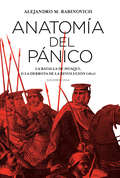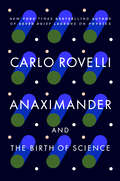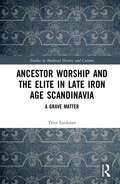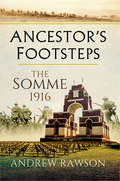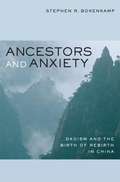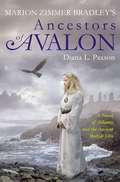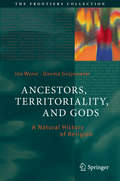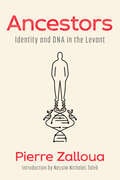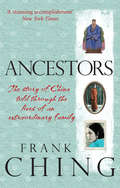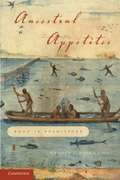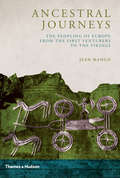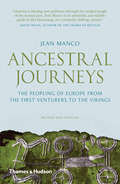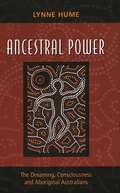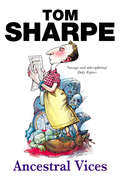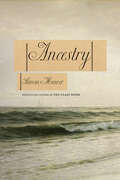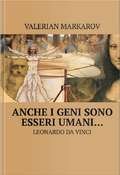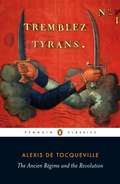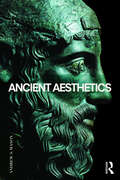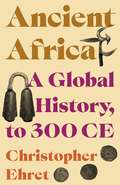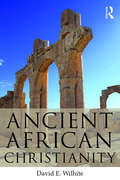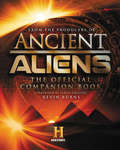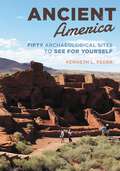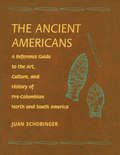- Table View
- List View
Anatomía del pánico: La batalla de Huaqui, o la derrota de la Revolución (1811)
by Alejandro RabinovichBasado en testimonios y documentos inéditos, Alejandro M. Rabinovich reconstruye de manera exhaustiva los pormenores de la batalla de Huaqui de 1811 y estudia en detalle las causas y las consecuencias de ese pánico que condujo a la pérdida del Alto Perú e hizo tambalear el futuro mismo de la Revolución. «Se pierde la acción del Desaguadero por la infamia de los abominables Castelli y Balcarce, y regresan las tropas dispersas y derrotadas, cometiendo en su tránsito los oficiales y soldados crímenes y atrocidades que sería difícil presumirse si no fuéramos testigos de su ejecución.»Miguel Otero (1812) La de Huaqui no fue una derrota más de las muchas que sufrió la Revolución. El ejército comandado por Castelli no fue vencido por la superioridad numérica del enemigo ni las bajas sufridas. Simplemente, en un momento dado, por algún motivo misterioso y en apariencia inexplicable, los 6.000 hombres que lo componían tiraron las armas, huyeron despavoridos y se internaron en cerros desconocidos para no salir sino días más tarde, después de haber cometido los más horrendos crímenes, marcados para siempre por una desbandada traumática. ¿Qué fue lo que pasó? ¿Qué hizo que esos oficiales y soldados enloquecieran de semejante modo? Los contemporáneos lo llamaron "pánico".
Anaximander: And the Birth of Science
by Carlo RovelliThe bestselling author of Seven Brief Lessons on Physics illuminates the nature of science through the revolutionary ideas of the Greek philosopher Anaximander Over two millennia ago, the prescient insights of Anaximander paved the way for cosmology, physics, geography, meteorology, and biology, setting in motion a new way of seeing the world. His legacy includes the revolutionary ideas that the Earth floats in a void, that animals evolved, that the world can be understood in natural rather than supernatural terms, and that universal laws govern all phenomena. He introduced a new mode of rational thinking with an openness to uncertainty and the progress of knowledge. In this elegant work, the renowned theoretical physicist Carlo Rovelli brings to light the importance of Anaximander&’s overlooked influence on modern science. He examines Anaximander not from the point of view of a historian or as an expert in Greek philosophy, but as a scientist interested in the deep nature of scientific thinking, which Rovelli locates in the critical and rebellious ability to reimagine the world again and again. Anaximander celebrates the radical lack of certainty that defines the scientific quest for knowledge.
Ancestor Worship and the Elite in Late Iron Age Scandinavia: A Grave Matter (Studies in Medieval History and Culture)
by Triin LaidonerAncestor worship is often assumed by contemporary European audiences to be an outdated and primitive tradition with little relevance to our societies, past and present. This book questions that assumption and seeks to determine whether ancestor ideology was an integral part of religion in Viking Age and early medieval Scandinavia. The concept is examined from a broad socio-anthropological perspective, which is used to structure a set of case studies which analyse the cults of specific individuals in Old Norse literature. The situation of gods in Old Norse religion has been almost exclusively addressed in isolation from these socio-anthropological perspectives. The public gravemound cults of deceased rulers are discussed conventionally as cases of sacral kingship, and, more recently, religious ruler ideology; both are seen as having divine associations in Old Norse scholarship. Building on the anthropological framework, this study introduces the concept of ‘superior ancestors’, employed in social anthropology to denote a form of political ancestor worship used to regulate social structure deliberately. It suggests that Old Norse ruler ideology was based on conventional and widely recognised religious practices revolving around kinship and ancestors and that the gods were perceived as human ancestors belonging to elite families.
Ancestor's Footsteps: The Somme 1916
by Andrew RawsonThis book answers one of biggest unanswered questions asked by visitors to the Somme; where did my ancestor fight? The combination of First World War battle accounts and annotated trench maps throughout this book, explains exactly what happened and where, and indexed orders of battle give the reader a quick reference to locate individual units.But the book goes further than this as carefully chosen viewpoints, which are practical for anyone exploring in a car, have been suggested. They give the visitor different perspectives of the ground where their ancestors fought and died; and in many cases are buried in an unmarked grave.There is useful information on the structure of the British Army and the weapons, equipment and uniforms the men used. Information on the different methods of attacks used, the development of tactics and life in the trenches is also included. As well as this, there is a guide to the key cemeteries, memorials and museums the visitor should consider seeing to complete a visit.This book will help the casual visitor walk in their ancestors footsteps across the Somme battlefield. It will also guide the regular visitor across different areas of the battlefield, away from the popular points, and help all visitors accomplish the rewarding experience of connecting the battles of the past with the terrain of today.
Ancestors and Anxiety: Daoism and the Birth of Rebirth in China
by Stephen R. BokenkampThis innovative work on Chinese concepts of the afterlife is the result of Stephen Bokenkamp's groundbreaking study of Chinese scripture and the incorporation of Indic concepts into the Chinese worldview. Here, he explores how Chinese authors, including Daoists and non-Buddhists, received and deployed ideas about rebirth from the third to the sixth centuries C.E.
Ancestors of Avalon (Avalon #6)
by Diana L. PaxsonYet another mystical and magical Avalon installment, in which the reader will learn of Avalon's ancient Atlantis history, of priestesses, and of power.
Ancestors, Territoriality, and Gods: A Natural History of Religion (The Frontiers Collection)
by Ina Wunn Davina GrojnowskiThis books sets out to explain how and why religion came into being. Today this question is as fascinating as ever, especially since religion has moved to the centre of socio-political relationships. In contrast to the current, but incomplete approaches from disciplines such as cognitive science and psychology, the present authors adopt a new approach, equally manifest and constructive, that explains the origins of religion based strictly on behavioural biology. They employ accepted research results that remove all need for speculation. Decisive factors for the earliest demonstrations of religion are thus territorial behaviour and ranking, coping with existential fears, and conflict solution with the help of rituals. These in turn, in a process of cultural evolution, are shown to be the roots of the historical and contemporary religions.
Ancestors: Identity and DNA in the Levant
by Pierre ZallouaAn eye-opening investigation into ancestry and origins in the Middle East that synthesizes thousands of years of genetic history in the region to question what it means to be indigenous to any land&“Ancestors transcends geography to launch an eye-opening inquiry into the relationship of genetics and identity. It&’s a transformational read for us all.&”—Jason Roberts, author of Every Living Thing and A Sense of the WorldIn recent years, genetic testing has become easily available to consumers across the globe, making it relatively simple to find out where your ancestors came from. But what do these test results actually tell us about ourselves?In Ancestors, Pierre Zalloua, a leading authority on population genetics, argues that these test results have led to a dangerous oversimplification of what one&’s genetic heritage means. Genetic ancestry has become conflated with anthropological categories such as &“origin,&” &“ethnicity,&” and even &“race&” in spite of the complexities that underlie these concepts. And nowhere is this interplay more important and more controversial, Zalloua writes, than in the Levant—an ancient region known as one of the cradles of civilization and that now includes Palestine, Israel, Jordan, Lebanon, Syria, and parts of Turkey.Born in Lebanon, Zalloua grew up surrounded by people for whom the question of identity was a matter of life or death. Building on years of research, he tells a rich and compelling history of the Levant through the framework of genetics that spans from one hundred thousand years ago, when humans first left Africa, to the twenty-first century and modern nation-states.A timely, paradigm-shifting investigation into ancestry and origins in the Middle East, Ancestors ultimately reframes what it means to be indigenous to any land—urging us to reshape how we think about home, belonging, and where culture really comes from.
Ancestors: The story of China told through the lives of an extraordinary family
by Frank ChingFrank Ching brings to life 900 years of Chinese history through his own fascinating family tree. Beginning with his search for the grave of his first recorded ancestor, the 11th century poet Qin Guan, and ending with a moving account of his relationship with his father, a victim of China's historic upheaval, Frank Ching introduces a colourful cast of characters. His unbroken family line includes - among many others - a lovelorn concubine, a traitor, a military hero, an imperial ghost-writer, a minister of punishments and a woman noted for her skills in both verse and martial arts. There is scarcely an aspect of Chinese life, from shamanism to violent rebellion, that Ching doesn't touch upon in this fascinating work. Through his vivid and personal portraits of his ancestors the history of China itself unfolds: from the days of the ancient empire to its radical transformation today.
Ancestral Appetites: Food in Prehistory
by Kristen J. GremillionThis book explores the relationship between prehistoric people and their food - what they ate, why they ate it and how researchers have pieced together the story of past foodways from material traces. Contemporary human food traditions encompass a seemingly infinite variety, but all are essentially strategies for meeting basic nutritional needs developed over millions of years. Humans are designed by evolution to adjust our feeding behaviour and food technology to meet the demands of a wide range of environments through a combination of social and experiential learning. In this book, Kristen J. Gremillion demonstrates how these evolutionary processes have shaped the diversification of human diet over several million years of prehistory. She draws on evidence extracted from the material remains that provide the only direct evidence of how people procured, prepared, presented and consumed food in prehistoric times.
Ancestral Encounters in Highland Madagascar
by Zoë CrosslandNineteenth-century highland Madagascar was a place inhabited by the dead as much as the living. Ghosts, ancestors and the possessed were important historical actors alongside local kings and queens, soldiers, traders and missionaries. This book considers the challenges that such actors pose for historical accounts of the past and for thinking about questions of presence and representation. How were the dead made present, and how were they recognized or not? In attending to these multifarious encounters of the nineteenth century, how might we reflect on the ways in which our own history-writing makes the dead present? To tackle these questions, Zoë Crossland tells an anthropological history of highland Madagascar from a perspective rooted in archaeology and Peircean semiotics, as well as in landscape study, oral history and textual sources.
Ancestral Fault in Ancient Greece
by Renaud GagnéAncestral fault is a core idea of Greek literature. 'The guiltless will pay for the deeds later: either the man's children, or his descendants thereafter', said Solon in the sixth century BC, a statement echoed throughout the rest of antiquity. This notion lies at the heart of ancient Greek thinking on theodicy, inheritance and privilege, the meaning of suffering, the links between wealth and morality, individual responsibility, the bonds that unite generations and the grand movements of history. From Homer to Proclus, it played a major role in some of the most critical and pressing reflections of Greek culture on divinity, society and knowledge. The burning modern preoccupation with collective responsibility across generations has a long, deep antecedent in classical Greek literature and its reception. This book retraces the trajectories of Greek ancestral fault and the varieties of its expression through the many genres and centuries where it is found.
Ancestral Journeys: The Peopling of Europe from the First Venturers to the Vikings
by Jean MancoIncorporates the latest discoveries and theories from archaeology, genetics, history, and linguistics to paint a spirited history of European settlement Who are the Europeans and where did they come from? In recent years scientific advances have released a mass of data, turning cherished ideas upside down. The idea of migration in prehistory, so long out of favor, is back on the agenda. New advances allow us to track human movement and the spread of crops, animals, and disease, and we can see the evidence of population crashes and rises, both continent-wide and locally. Visions of continuity have been replaced with a more dynamic view of Europe's past, with one wave of migration followed by another, from the first human arrivals in Europe to the Vikings. Ancient DNA links Europe to its nearest neighbors. It is not a new idea that farming was brought from the Near East, but genetics now reveal an unexpectedly complex process in which farmers arrived not in one wave, but several. Even more unexpected is the evidence that the European gene pool was stirred vigorously many times after farming had reached most of Europe. Climate change played a part in this upheaval, but so did new inventions such as the c and wheeled vehicles. Genetic and linguistic clues also enhance our understanding of the upheavals of the Migration Period, the wanderings of steppe nomads, and the adventures of the Vikings.
Ancestral Journeys: The Peopling of Europe from the First Venturers to the Vikings (Revised and Updated Edition)
by Jean Manco“An ambitious and lucid full narrative account of the peopling of Europe . . . this will undoubtedly provide a base line for future debates on the origins of the Europeans.” —J. P. Mallory, author of In Search of the Indo-Europeans and The Origins of the Irish Who are the Europeans? Where did they come from? New research in the fields of archaeology and linguistics, a revolution in the study of genetics, and cutting-edge analysis of ancient DNA are dramatically changing our picture of prehistory, leading us to question what we thought we knew about these ancient peoples. This paradigm-shifting book paints a spirited portrait of a restless people that challenges our established ways of looking at Europe’s past. The story is more complex than at first believed, with new evidence suggesting that the European gene pool was stirred vigorously multiple times. Genetic clues are also enhancing our understanding of European mobility in epochs with written records, including the arrival of the Anglo-Saxons, the spread of the Slavs, and the adventures of the Vikings. Now brought completely up to date with all the latest findings from the fast-moving fields of genetics, DNA, and dating, Jean Manco’s highly readable account weaves multiple strands of evidence into a startling new history of the continent, of interest to anyone who wants to truly understand Europeans’ place in the ancient world.
Ancestral Power: The Dreaming, Consciousness and Aboriginal Australians
by Lynne HumeThe Dreaming, or the Dreamtime, is the English translation of a complex Aboriginal religious concept. It relates to the idea of an ancestral presence which exists as a spiritual power that is deeply present in the land. This presence or power also exists in certain paintings, in some dance performances, and in songs, blood and ceremonial objects. In Ancestral Power, Lynne Hume seeks to further our understanding of human consciousness by looking through a Western lens at the concept of the Dreaming. She examines the idea that Aboriginal people may have used certain techniques for entering altered states of consciousness. Could their experiences in such states, together with their extensive knowledge of their environment, have helped to create the cosmological scheme we call the Dreaming? With these questions in mind, she brings together and examines, for the first time, a wide range of existing literature on Aboriginal cosmology and spiritual practices, together with studies of Aboriginal art, data from anthropologists and ethnomusicologists, and statements by Aboriginal people from many different regional areas of Australia. Much of the information she highlights is little known. Ancestral Power suggests that Aboriginal spirituality is much more complex and compelling than the early missionaries could ever have imagined.
Ancestral Vices
by Tom SharpeWith his only friend a computer, Walden Yapp has lived a singular life. Professor of Demotic History at the University of Kloone, Yapp spends his days highlighting the corrupt capitalistic nature of the upper-classes, and his nights feeding Doris his computer the information he has gatheredSo when capitalist Lord Petrefact hires him to write a damaging family history, Yapp seizes the chance to chronicle the corrupt life of the Petrefact family. Spurred on by his expectations of dishonesty and depravity Yapp heads of the town of Buscott, where nobody is what they at first appear to be.Now a pawn in Lord Petrefact’s vindictive family game, Yapp’s presence is as welcome as the plague. From provoking dwarfish marital problems to uncovering an erotic toy factory Yapp’s presence sparks a chain of events that ends in death, destruction and a murder trial. Going through a car wash will never feel the same again.
Ancestry: A Novel
by Simon MawerThe New York Times bestselling author of The Glass Room brings a slice of his own family history to life through extensive research and rich storytelling.Beginning with his great-great-grandfather Abraham Block, acclaimed novelist Simon Mawer sifts through evidence like an archaeologist, piecing together the stories of his ancestors. Illiterate and lacking opportunity in the bleak Suffolk village where his parents worked as agricultural laborers, Abraham leaves home at fifteen, in 1847. He signs away the next five years in an indenture aboard a ship, which will circuitously lead him to London and well beyond, to far-flung ports on the Mediterranean and the Black Sea. In London he crosses paths with Naomi Lulham, a young seamstress likewise seeking a better life in the city, with all its prospects and temptations. Another branch of the family tree comes together in 1847, in Manchester, as soldier George Mawer weds his Irish bride Ann Scanlon—Annie—before embarking with his regiment. When he is called to fight in the Crimean War, Annie must fend for herself and her children on a meager income, navigating an often hostile world as a woman alone. With a keen eye and a nuanced consideration of the limits of what we can know about the past, Mawer paints a compelling, intimate portrait of life in the nineteenth century.
Anche i geni sono esseri umani: Leonardo da Vinci
by Valerian MarkarovVisse un uomo straordinario, il cui nome è noto ad ognuno: Leonardo d Vinci. La sua vita fu piena di misteri, vittorie e sconfitte, tragedie e amore. Questo appassionante romanzo, basato su avvenimenti storici, ci trasporta nell'Italia dell'epoca del Rinascimento e i suoi personaggi — papi e cardinali, re e condottieri, politici e artisti — sono presenti come persone vive. Nel libro sono toccati temi che possono ferire i sentimenti di una determinata parte di persone. Leggete la stupefacente storia della vita di un uomo bellissimo, una vita divenuta leggenda…
Ancien Regime and the Revolution
by Alexis de TocquevilleThe Ancien Régime and the Revolution is a comparison of revolutionary France and the despotic rule it toppled. Alexis de Tocqueville (1805–59) is an objective observer of both periods – providing a merciless critique of the ancien régime, with its venality, oppression and inequality, yet acknowledging the reforms introduced under Louis XVI, and claiming that the post-Revolution state was in many ways as tyrannical as that of the King; its once lofty and egalitarian ideals corrupted and forgotten. Writing in the 1850s, Tocqueville wished to expose the return to despotism he witnessed in his own time under Napoleon III, by illuminating the grand, but ultimately doomed, call to liberty made by the French people in 1789. His eloquent and instructive study raises questions about liberty, nationalism and justice that remain urgent today.
Ancient Aesthetics
by Andrew MasonAncient thought, particularly that of Plato and Aristotle, has played an important role in the development of the field of aesthetics, and the ideas of ancient thinkers are still influential and controversial today. Ancient Aesthetics introduces and discusses the central contributions of key ancient philosophers to this field, carefully considering their theories regarding the arts, especially poetry, but also music and visual art, as well as the theory of beauty more generally. With a focus on Plato and Aristotle, the philosophers who have given us their thought about the arts at the greatest length, this volume also discusses Hellenistic aesthetics and Plotinus’ theory of beauty, which was to prove very influential in later thought. Ancient Aesthetics is a valuable contribution to its field, and will be of interest to students of philosophy and classics.
Ancient Africa: A Global History, to 300 CE
by Christopher EhretA panoramic narrative that places ancient Africa on the stage of world historyThis book brings together archaeological and linguistic evidence to provide a sweeping global history of ancient Africa, tracing how the continent played an important role in the technological, agricultural, and economic transitions of world civilization. Christopher Ehret takes readers from the close of the last Ice Age some ten thousand years ago, when a changing climate allowed for the transition from hunting and gathering to the cultivation of crops and raising of livestock, to the rise of kingdoms and empires in the first centuries of the common era.Ehret takes up the problem of how we discuss Africa in the context of global history, combining results of multiple disciplines. He sheds light on the rich history of technological innovation by African societies—from advances in ceramics to cotton weaving and iron smelting—highlighting the important contributions of women as inventors and innovators. He shows how Africa helped to usher in an age of agricultural exchange, exporting essential crops as well as new agricultural methods into other regions, and how African traders and merchants led a commercial revolution spanning diverse regions and cultures. Ehret lays out the deeply African foundations of ancient Egyptian culture, beliefs, and institutions and discusses early Christianity in Africa.A monumental achievement by one of today’s eminent scholars, Ancient Africa offers vital new perspectives on our shared past, explaining why we need to reshape our historical frameworks for understanding the ancient world as a whole.
Ancient African Christianity: An Introduction to a Unique Context and Tradition
by David E. WilhiteChristianity spread across North Africa early, and it remained there as a powerful force much longer than anticipated. While this African form of Christianity largely shared the Latin language and Roman culture of the wider empire, it also represented a unique tradition that was shaped by its context. Ancient African Christianity attempts to tell the story of Christianity in Africa from its inception to its eventual disappearance. Well-known writers such as Tertullian, Cyprian, and Augustine are studied in light of their African identity, and this tradition is explored in all its various expressions. This book is ideal for all students of African Christianity and also a key introduction for anyone wanting to know more about the history, religion, and philosophy of these early influential Christians whose impact has extended far beyond the African landscape.
Ancient Aliens: The Official Companion Book
by Producers of Ancient AliensThe first official companion book to HISTORY® network’s hit series explores fascinating unanswered questions about the origins of our civilizations. Foreword by series creator Kevin BurnsMillions of people around the world believe we have been visited in the past by extraterrestrial beings. What if it were true? And if so, what if there were clues left behind? Each week, hundreds of thousands of viewers tune in to the wildly popular Ancient Aliens® television series to seek insight into those very questions—and to become part of a thrilling, probing exploration of the mysteries at the heart of world civilizations.The first official companion book to the hit show, Ancient Aliens® takes readers even deeper into the mysteries that have made the show a pop culture phenomenon. Filled with exciting insights and behind-the-scenes stories from the show’s creators and leading experts in ancient alien theory, the book explores the key questions at the heart of the series:Who were they?Why did they come?What did they leave behind?Where did they go?Will they return?Transporting readers around the globe, Ancient Aliens® explores the fascinating enigmas and mysterious artifacts our ancestors left behind, from incredible objects to amazingly accurate ancient maps; from the Great Pyramid of Giza and stone megaliths at Gobekli Tepe to the Nazca Plains and mysterious structures of Puma Punku.Accompanied by lavish 4-color photography throughout, the book allows armchair archaeologists to examine the evidence up close for the first time. The ultimate-fan book, Ancient Aliens® is a compelling journey through the mysteries of our ancient civilizations and the possibility of alien influence on our cultures.
Ancient America: Fifty Archaeological Sites to See for Yourself
by Kenneth L FederVisit fifty amazing places highlighting indigenous peoples&’ art, engineering, and more in &“a thoroughly enjoyable guide to America&’s prehistory.&” ―American Archaeology Well-traveled anthropologist Kenneth Feder invites readers to explore the stunning technological, architectural, engineering, and artistic achievements of America&’s first peoples. Part travel guide, part friendly reference, Ancient America showcases fifty iconic and publicly accessible sites located across the contiguous United States, most in state and national parks—including monumental pyramids of earth, &“castles&” ensconced in cliff niches, and vast rock art galleries. Among the places profiled are: Four World Heritage Sites (Chaco Canyon, NM; Mesa Verde, CO; Cahokia, IL; Poverty Point, LA) Numerous Historic Landmarks and National Monuments (including Crystal River, FL; Town Creek Mound, NC; Casa Grande, AZ; and Hovenweep, UT) Stunningly diverse sites ranging from Serpent Mound (OH) and Horsethief Lake (WA) to Canyon de Chelly (AZ) and Nine Mile Canyon (UT) In addition to practical visitor information, Feder tells the fascinating stories of each site as revealed by archaeological research. Introductory chapters delve into the deep past of Native America; historical and cultural details as well as original photography round out the site entries. &“Sites are . . . ranked on a number of factors useful for visitors, including &‘Ease of Road Access,&’ &‘Natural Beauty,&’ &‘Kid Friendliness,&’ and the overall &‘Wow Factor.&’ . . . will inspire readers to visit places that will connect them to the early peoples of North America.&” ―Booklist
Ancient Americans
by SchobingerLavishly illustrated in full color and black and white, this handsome reference provides a broad survey of the rich artistic heritage of pre-Columbian North and South America. Meticulously researched by archaeologists and anthropologists, the set features dramatic close-ups of engraved rock artifacts, cave paintings, pottery, and inscribed and sculpted bones. Covering the entire two continents from present-day Canada in the far north through Central America and down to the Andes Mountains and Patagonia in the south, it is a stunning visual and written record of the great variety of artworks created by Neolithic American peoples over many millennia.
